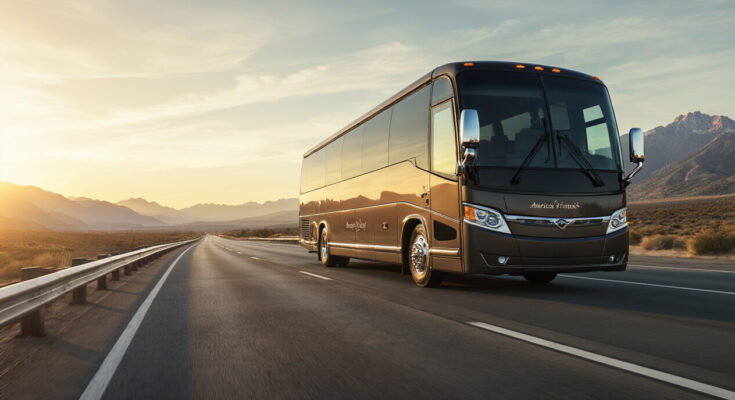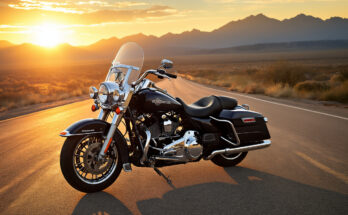Ever waited at a bus stop in sweltering heat while your phone battery dies and your meeting starts in 20 minutes? Yeah, America’s bus systems aren’t exactly winning popularity contests these days.
But here’s the thing – not all buses are created equal. Some American bus services are actually revolutionizing how we think about ground transportation, offering amenities that would make airline executives sweat.
I’ve spent the last decade reviewing America’s finest buses for travel, transit and tours. What I’ve found might surprise you – from WiFi that actually works to seats that don’t feel like medieval torture devices.
The real question isn’t whether buses can compete with planes and trains anymore. It’s why more travelers haven’t discovered these hidden gems of American transportation. Let me show you what you’ve been missing.
Premium Bus Manufacturers in America
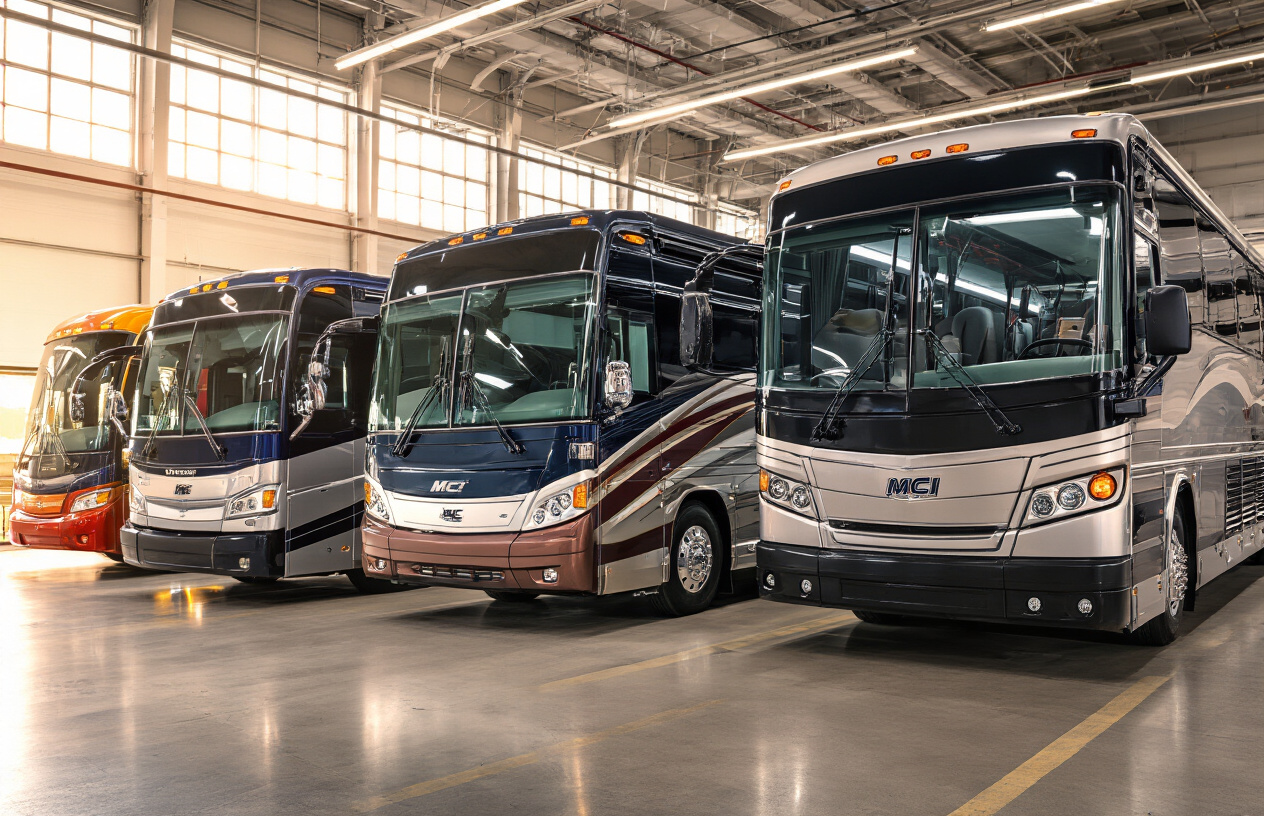
A. Blue Bird: Excellence in School and Transit Solutions
Ever ridden in a Blue Bird bus? These iconic yellow school buses have been a staple of American education for over 90 years. But Blue Bird isn’t just about school transportation – they’ve become powerhouses in the transit world too.
Blue Bird stands out with their commitment to alternative fuels. Their propane, electric, and CNG buses aren’t just better for the environment – they’re saving school districts serious money on fuel costs. Some districts report saving over $3,500 per bus annually by switching to propane!
Their Vision model remains the gold standard for school transportation, while their All American series offers next-level durability for high-traffic routes. These buses aren’t just tough – they’re smart too, with advanced safety features that parents can feel good about.
B. MCI (Motor Coach Industries): Luxury Intercity Options
MCI buses are what long-distance dreams are made of. Their J4500 model is the best-selling coach in North America – and for good reason. These aren’t just buses; they’re rolling luxury lounges.
The comfort level on an MCI coach makes those 8-hour trips actually enjoyable. Think plush seating with extra legroom, individual climate controls, and Wi-Fi that actually works. Their D-Series coaches have become the backbone of intercity travel, with Greyhound and other major carriers relying on their legendary reliability.
What really sets MCI apart is their battery-electric options. Their new J4500 CHARGE model can go up to 200 miles on a single charge – perfect for operators looking to go green without sacrificing performance.
C. Prevost: Top-tier Luxury Coaches
Prevost doesn’t just make buses – they craft masterpieces on wheels. Their X3-45 model is basically the Rolls-Royce of the coach world, with unmatched structural integrity and ride quality that makes passengers forget they’re on a bus.
Tour operators love Prevost for their customization options. Want a full galley kitchen? Multiple entertainment zones? Sleeping quarters? Prevost can build it. Their shell models are particularly popular for high-end conversions into mobile homes and entertainment vehicles for celebrities and executives.
The attention to detail is next-level – from the aircraft-inspired climate system that maintains perfect temperature throughout the cabin to the integrated AWARE safety systems that practically eliminate blind spots. Prevost coaches aren’t cheap, but when you need the absolute best, nothing else comes close.
D. New Flyer: Innovation in Public Transit Vehicles
New Flyer has been revolutionizing how Americans experience public transportation. Their Xcelsior platform has become the workhorse of urban transit systems nationwide, from New York to Los Angeles.
What makes them special? Their commitment to sustainability, for one. Their Xcelsior CHARGE NG electric buses are changing the game with up to 250 miles of range and fast-charging capabilities. Transit agencies are reporting significant maintenance savings after switching to New Flyer’s electric options.
Their articulated buses – those extra-long ones with the accordion middle – can move up to 120 passengers at once, making them ideal for busy urban routes. Plus, their low-floor designs and accessibility features make them truly inclusive transportation options.
New Flyer’s smart bus technology is particularly impressive, with real-time diagnostics that can predict maintenance needs before breakdowns occur – saving transit authorities millions in unexpected repairs and service disruptions.
Best Buses for Long-Distance Travel
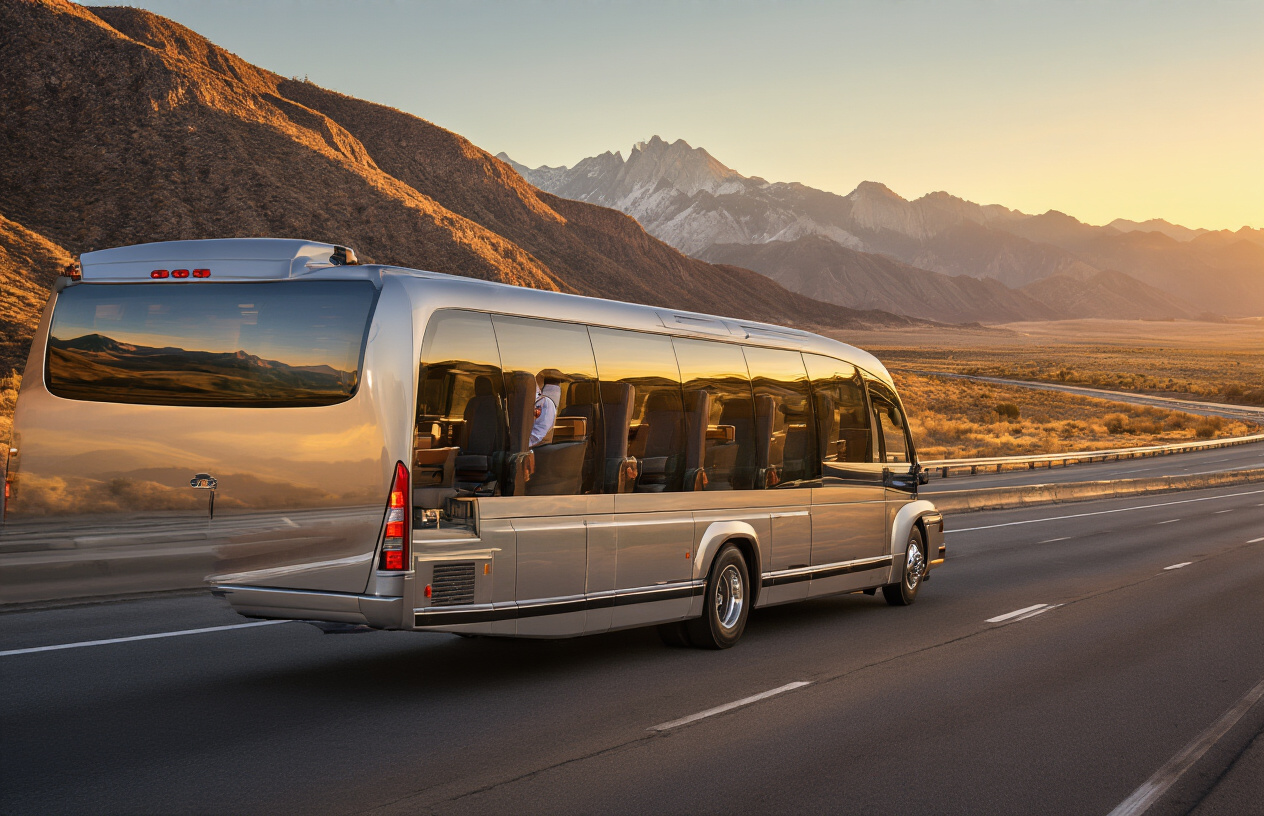
Features That Enhance Comfort on Extended Journeys
Long bus rides don’t have to be torture sessions. Modern coaches pack serious comfort features that make eight-hour journeys feel like a breeze. Reclining seats with 140-degree angles are now standard on premium models like the Prevost X3-45. And we’re not talking about those barely-movable airplane seats – these actually let you stretch out.
Legroom matters enormously. The MCI J4500 offers a whopping 15 more inches than older models. That’s the difference between cramped knees and actually being able to cross your legs.
Climate control has come a long way too. Buses like the Van Hool TX series feature individual air controls and reading lights. No more freezing while the person across the aisle is sweating.
Top Models With Superior Fuel Efficiency
The days of gas-guzzling coaches are behind us. The Volvo 9700 achieves an impressive 9-10 MPG – nearly double what buses managed twenty years ago. They’ve incorporated hybrid technology that recovers energy during braking.
BYD’s electric coach lineup takes efficiency to another level. Their C10MS can run 200+ miles on a single charge. Yes, that’s real-world performance, not just marketing hype.
MCI’s D45 CRT LE uses lightweight composite materials, cutting weight by 20% compared to older models without sacrificing safety. Less weight equals better fuel economy – simple physics working in your favor.
Buses With Outstanding Reliability Records
Reliability isn’t just nice-to-have – it’s essential when you’re crossing state lines. The Prevost H3-45 boasts an impressive 96% on-time service record across major carriers. These machines routinely log 1.5 million miles before major overhauls.
Motor Coach Industries (MCI) builds their J-series with a stainless steel structure that resists corrosion even in harsh winter conditions. Their maintenance intervals stretch to 15,000 miles – significantly reducing downtime.
Van Hool’s reliability comes from their rigorous testing program. Each coach undergoes a punishing 500-mile test drive before delivery. They log fewer breakdowns per 100,000 miles than almost any competitor.
Premium Amenities Worth the Investment
Modern long-haul buses aren’t just about getting there – they’re about enjoying the journey. WiFi is now standard, but the quality matters. Megabus equips their vehicles with commercial-grade routers and multiple carriers to maintain connectivity even in rural areas.
Power outlets at every seat? That’s old news. The newest Greyhound fleet features USB-C fast charging ports that can juice up your phone to 50% in about 20 minutes.
Entertainment systems have evolved dramatically. Prevost’s media centers offer individual screens with on-demand content. Some Vonlane buses even include noise-cancelling headphones at premium seats.
Accessibility Options for All Travelers
The industry has finally embraced universal design principles. MCI’s D45 CRT LE features a revolutionary low-entry vestibule that eliminates the need for wheelchair lifts. Passengers simply roll aboard using a gentle ramp.
Prevost’s ADA package includes automated securement systems that give independence back to wheelchair users. No more awkward manual strapping by drivers.
For passengers with hearing impairments, many premium coaches now incorporate visual announcement systems. The Volvo 9700 includes digital displays that show all driver announcements and upcoming stops.
Superior City Transit Bus Options
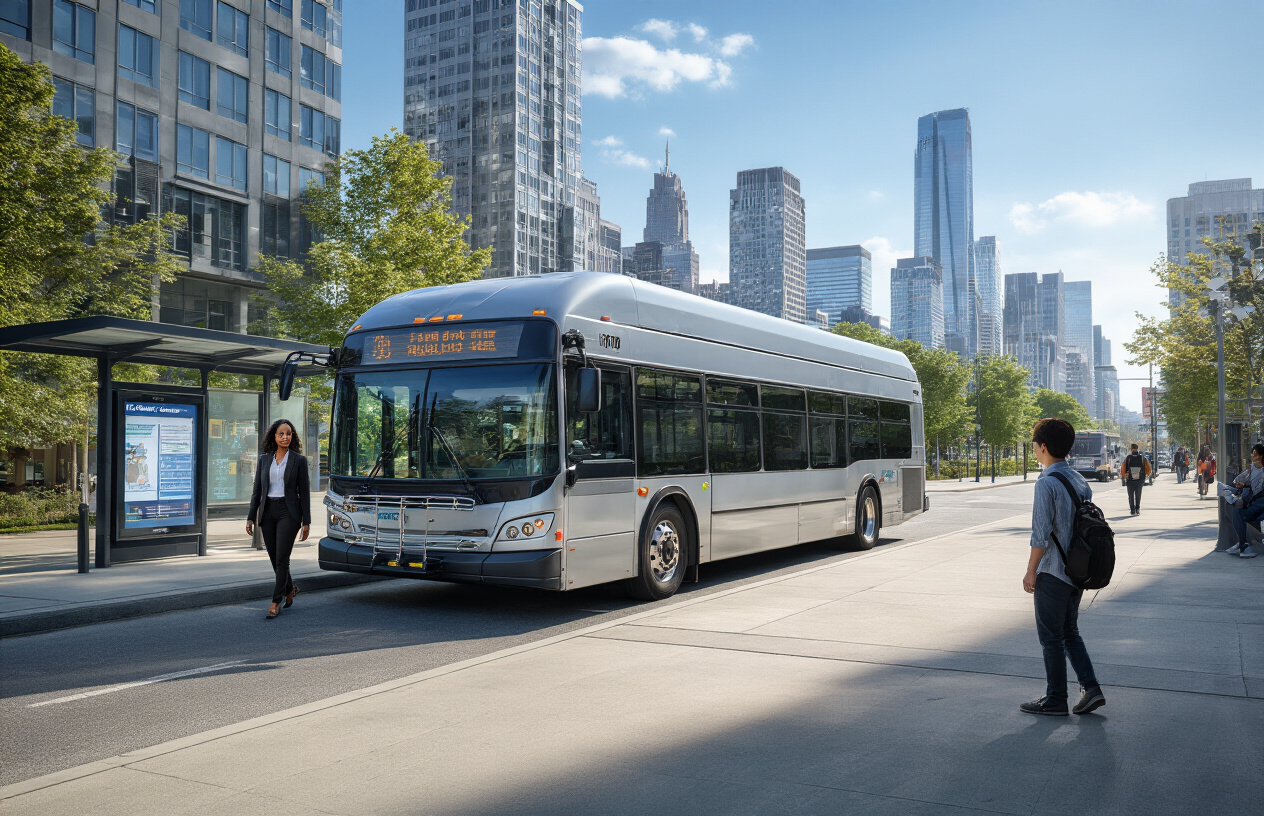
Electric and Hybrid Models Revolutionizing Urban Transport
The bus game has changed dramatically in American cities. Remember those noisy, smoke-belching monsters that used to rumble down your street? They’re disappearing fast.
Today’s electric buses glide through urban centers whisper-quiet, with zero emissions and lower operating costs. Cities like Portland and Los Angeles have gone all-in, with LA committing to an all-electric fleet by 2030.
Hybrid models are bridging the gap beautifully. They’re cutting fuel consumption by up to 40% compared to traditional diesel buses. New York’s MTA has deployed hundreds of these hybrid workhorses, giving riders a smoother, cleaner experience while saving millions in fuel costs.
The real game-changer? Battery technology. The newest electric buses can now run 200+ miles on a single charge. That’s enough for a full day of city routes without missing a beat.
Compact Designs for Navigating City Streets
Urban planners are in love with the new generation of nimble city buses. These aren’t your grandpa’s bulky behemoths.
The 30-foot midi buses are perfect for tight downtown streets and narrow neighborhood routes. They turn on a dime but still seat 25-30 passengers comfortably.
Some cities have embraced ultra-compact 20-foot models for historic districts where every inch matters. These zippy little buses navigate medieval-width streets that would give standard buses nightmares.
Articulated designs offer the best of both worlds – compact enough to handle tight turns while expanding capacity during peak hours. Seattle’s fleet demonstrates how these accordion-style buses manage challenging terrain without sacrificing passenger space.
High-Capacity Solutions for Rush Hour Demands
Rush hour used to mean packed buses and frustrated passengers. Not anymore.
Double-decker designs have doubled capacity without doubling the footprint. Las Vegas and Seattle operators report moving up to 96 passengers per vehicle – nearly twice a standard bus – while taking up the same road space.
Articulated and bi-articulated monsters can now move 200+ passengers in a single trip. Chicago’s transit authority uses these giants on its busiest routes, essentially providing light-rail capacity with bus flexibility.
The newest boarding systems have slashed dwell times by 40%. All-door boarding and tap-to-pay systems mean these high-capacity beasts keep moving even during peak hours.
Eco-Friendly Features Reducing Carbon Footprints
The environmental upgrades go way beyond just the powertrain.
Solar panels on bus roofs now power internal systems like air conditioning and passenger USB ports. San Francisco’s newer buses generate enough solar power to reduce fuel consumption by an additional 5-7%.
Regenerative braking systems capture energy that would be wasted during stops. This technology alone reduces fuel needs by up to 25% in stop-and-go city traffic.
Materials matter too. Modern city buses use recycled and sustainable materials throughout. The seats in Denver’s new fleet are made from recycled plastic bottles – each bus repurposing about 3,000 bottles that would otherwise end up in landfills.
Smart climate controls adjust heating and cooling based on passenger load, further reducing energy consumption. Small change, big impact.
Luxury Tour Buses That Impress
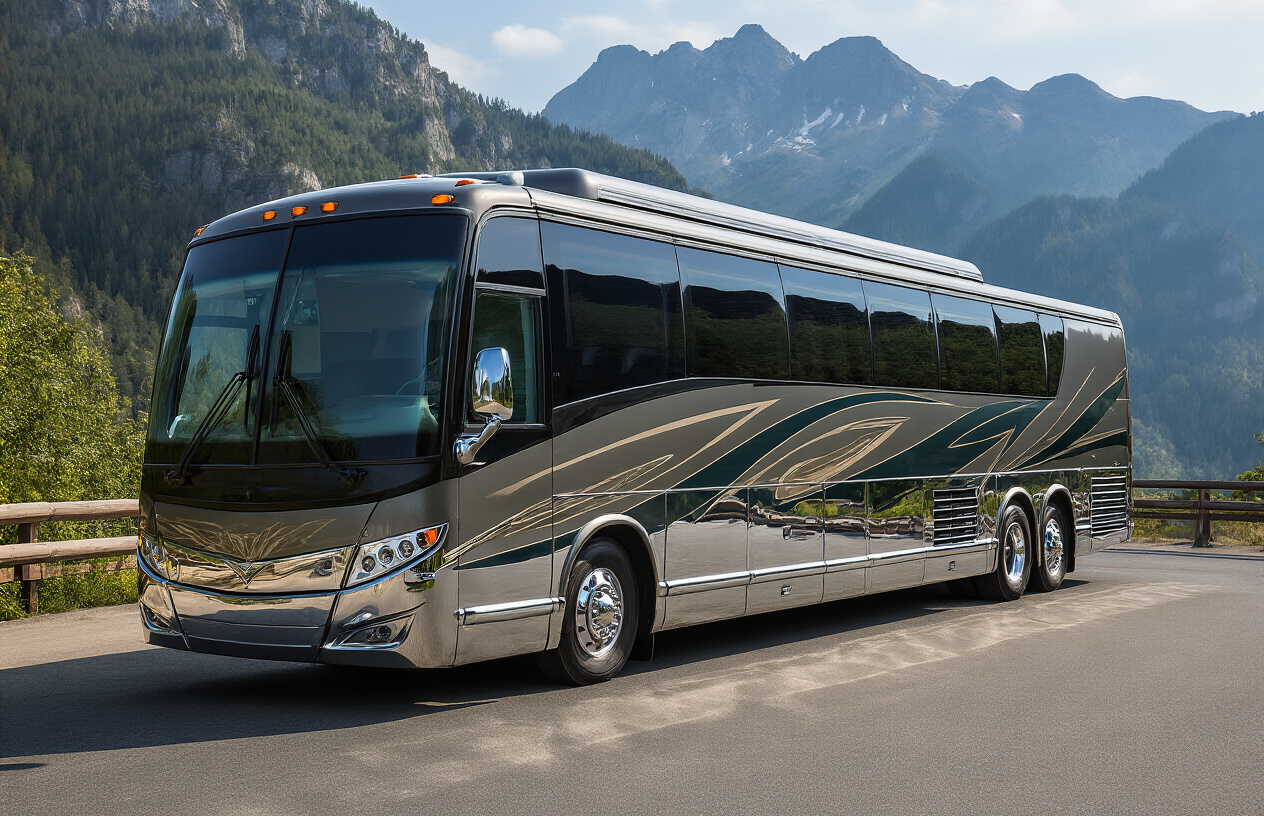
Entertainment Systems That Enhance the Journey
Ever been stuck on a bus with nothing to do? Not on these luxury tour buses. We’re talking state-of-the-art entertainment that’ll make your 8-hour drive feel like a Netflix binge session at home.
Today’s premium tour buses pack individual HD screens, wireless headphones, and personalized media selections. Many even offer full WiFi connectivity that actually works (yes, even in those mountain passes).
Some of the best buses feature:
- Multiple flat-screen TVs visible from every seat
- Premium sound systems with zoned audio
- USB charging at every seat
- Streaming capabilities for personal devices
- Gaming consoles for group entertainment
Customizable Interiors for Tour Operators
Tour operators, listen up. Your bus interior should match your brand, not the other way around.
Top luxury buses now come with fully customizable options. Want plush leather seats in your company colors? Done. Need specific seating configurations for different tour groups? No problem.
Operators can choose from:
- Custom upholstery in any color or material
- Modular seating that reconfigures for different tours
- Branded elements throughout the cabin
- Custom lighting schemes to set the mood
- Specialized storage solutions for specific tour needs
Panoramic Windows for Sightseeing Excellence
What’s the point of a tour if you can’t see the sights? The best luxury buses understand this, sporting massive panoramic windows that transform ordinary routes into immersive experiences.
Modern sightseeing buses feature floor-to-ceiling windows with UV protection and anti-glare technology. Some even offer glass roof panels so passengers never miss those towering skyscrapers or majestic mountain peaks.
Kitchen and Restroom Facilities That Stand Out
Gone are the days of dreading the bus bathroom. Luxury tour buses now feature restrooms that rival those in upscale hotels – spacious, clean, and actually pleasant to use.
As for food and drink? Think beyond the cooler of sodas. Premium tour buses now come equipped with:
- Full galleys capable of serving hot meals
- Espresso machines and premium coffee service
- Wine coolers and cocktail stations
- Refrigeration for fresh snacks and meals
- Microwave and convection ovens for diverse menu options
The best operators even staff these kitchens with attendants who can serve meals while you enjoy the scenery outside those panoramic windows.
Selecting the Right Bus for Your Needs

Assessment Tools for Fleet Managers
Finding the perfect bus isn’t just about picking the shiniest one on the lot. Smart fleet managers use actual tools to make this decision less of a headache.
Fleet management software is a game-changer. These digital platforms track fuel efficiency, maintenance history, and driver performance across different models. The data doesn’t lie – you’ll quickly see which buses deliver and which ones just drain your wallet.
Route analysis tools help match buses to their intended use. Why buy a massive coach for tight city routes? These tools simulate different bus types on your specific routes to find the perfect fit.
TCO calculators (Total Cost of Ownership) show you the real price tag beyond the sticker shock. They factor in fuel, maintenance, insurance, and depreciation over 5-10 years.
Many manufacturers offer virtual configuration tools too. Build your dream bus online, adjust specs, and see how changes affect performance and price before talking to a single salesperson.
Cost-Benefit Analysis of Different Models
Bus shopping is all about the long game. Here’s how different models stack up:
| Bus Type | Initial Cost | Fuel Efficiency | Passenger Capacity | Lifespan |
|---|---|---|---|---|
| Transit | $280K-$500K | Moderate | 30-40 | 12-15 years |
| Coach | $400K-$650K | Good on highways | 50-60 | 15-20 years |
| Shuttle | $75K-$150K | Better than large models | 15-25 | 8-10 years |
| Electric | $550K-$800K | Excellent (no fuel) | 30-40 | 12-15 years |
The math gets interesting when you crunch these numbers. Electric buses cost more upfront but can save you $400,000+ in fuel over their lifetime. That’s not pocket change.
Coach buses might seem expensive initially, but their longer lifespan and highway efficiency make them cost-effective for tour companies. For frequent stops and starts, transit buses with regenerative braking systems recover energy that would otherwise be wasted.
Don’t forget about resale value. Some brands hold their value better than others. A quality coach might still fetch 25-30% of its purchase price after 15 years of service.
Maintenance Considerations for Long-Term Value
The real money pit isn’t the purchase price—it’s what happens after you drive off the lot.
Preventive maintenance schedules vary dramatically between models. Some newer buses use telematics systems that predict failures before they happen, saving you from roadside emergencies and angry passengers.
Parts availability matters too. Buying an obscure model might save you money now, but good luck finding replacement parts in three years. Stick with manufacturers who maintain robust parts networks.
Training costs often get overlooked. Your maintenance team needs specialized knowledge for each bus type in your fleet. Electric buses require completely different skill sets than diesel models.
Warranty terms aren’t created equal. The best manufacturers stand behind their products with comprehensive coverage. Read the fine print—some warranties cover major components for 5+ years while others barely get you through 24 months.
Consider standardizing your fleet when possible. Your mechanics become experts on fewer systems, parts inventory shrinks, and training costs drop. Each 10% reduction in maintenance time translates to more buses on the road making money instead of sitting in the shop.
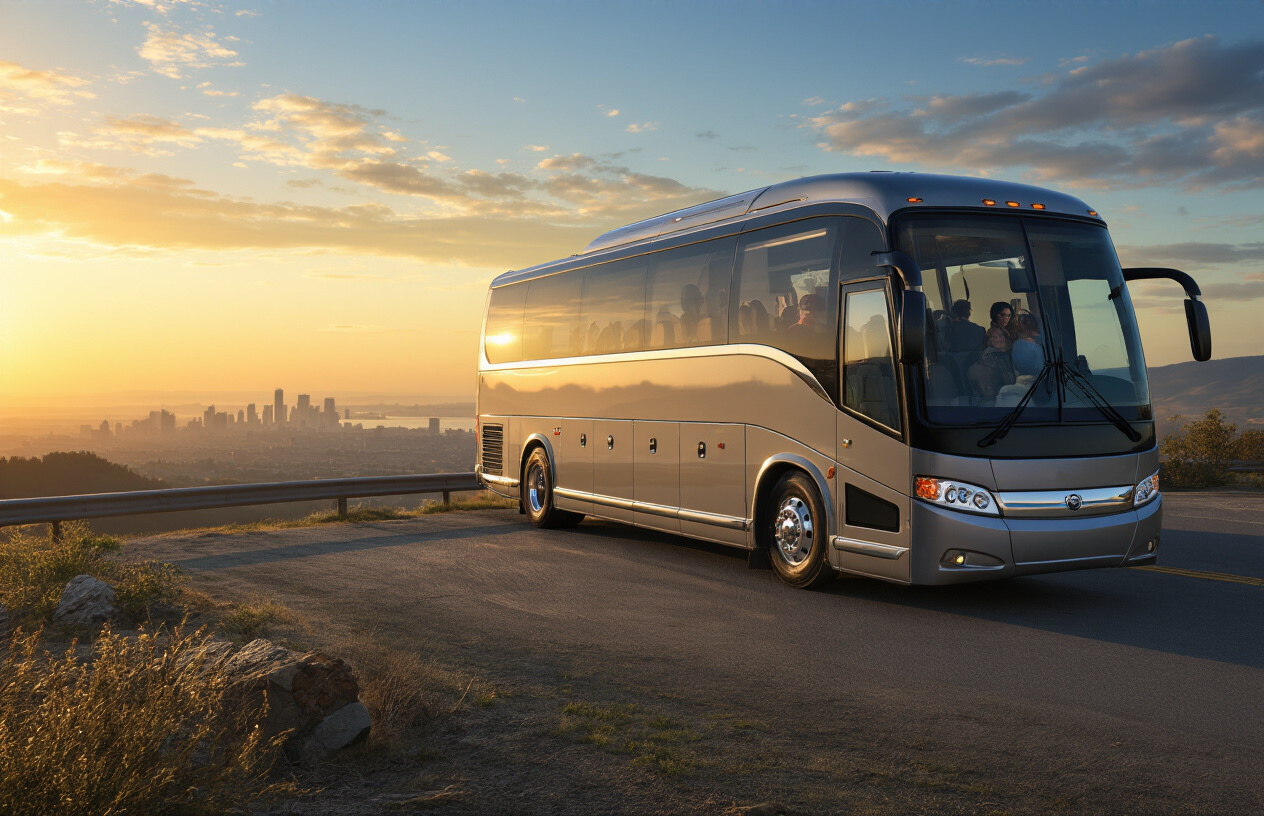
From luxury tour coaches to efficient city transit vehicles, America offers an impressive array of buses to meet diverse transportation needs. The top manufacturers consistently deliver excellence in comfort, safety, and performance whether you’re looking for long-distance travel options, city transit solutions, or premium tour experiences.
When selecting the right bus for your requirements, consider factors like passenger capacity, amenity options, fuel efficiency, and long-term maintenance costs. By choosing from America’s finest buses, you’ll ensure a reliable, comfortable experience for passengers while making a sound investment in quality transportation that stands the test of time.

